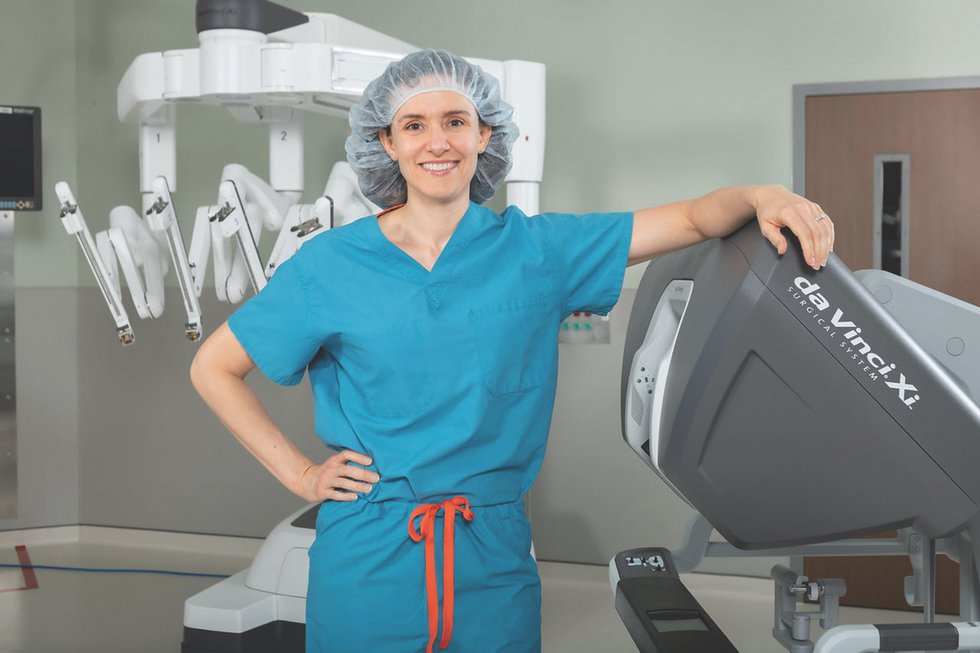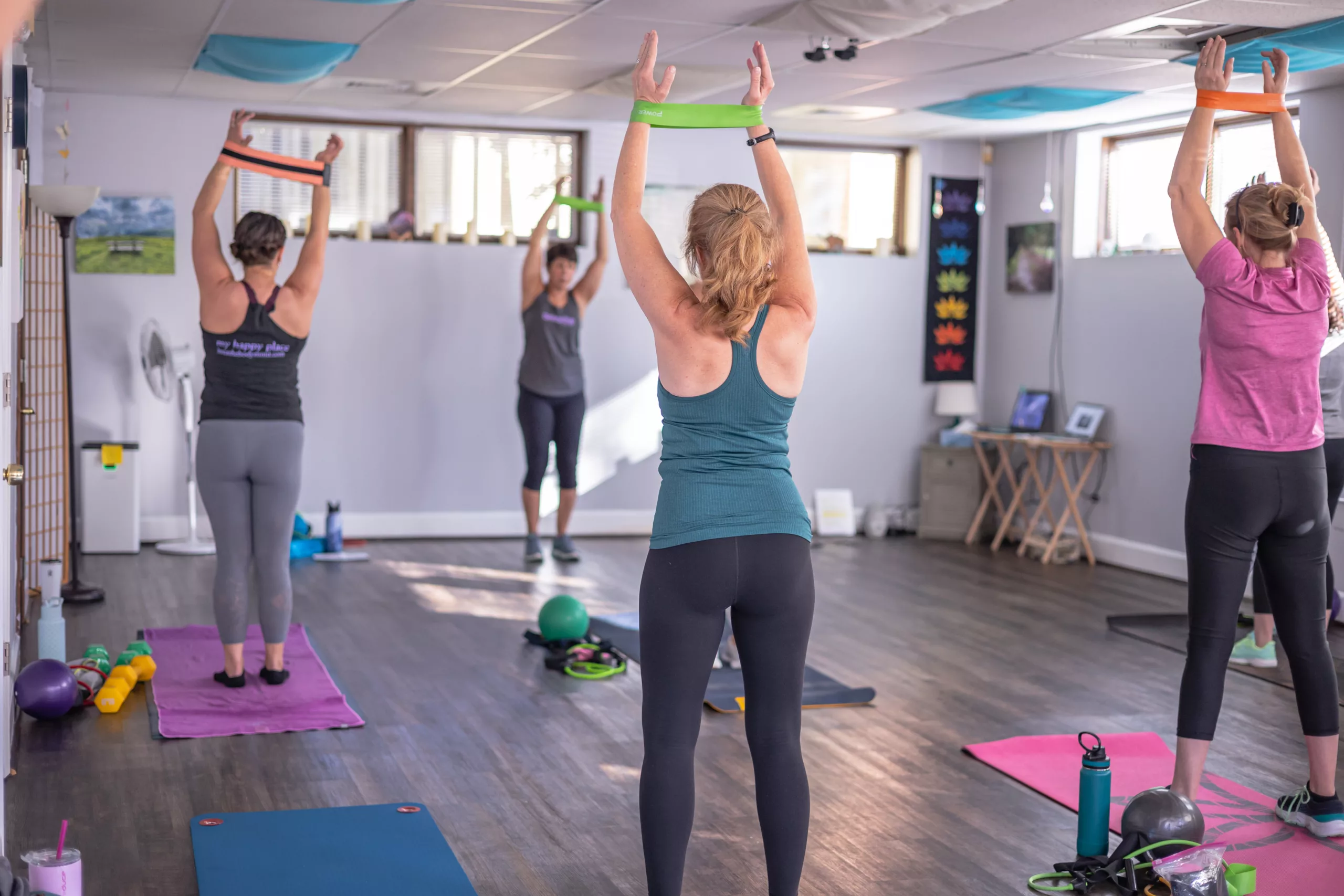High-tech surgery and a less-is-more approach afterward speed recovery for patients.

A new combination of high-tech robotic surgery and low-tech post-op care is helping patients recover faster and with fewer complications, says Jennifer Young, M.D., Chair of Surgery at Inova Loudoun Hospital, who uses this dual approach for the surgical removal of tumors in the prostate, kidney, and bladder.
“I’m passionate about the things we are doing in minimally invasive robotic surgery and enhanced recovery after surgery, which minimizes the need for opioids for pain management,” she notes.
Compared to traditional surgery, which requires a large incision and a lengthy hospital recovery of 5-14 days, robotic technology allows surgeons to make smaller incisions so, “we’re seeing less postoperative pain,” says Dr. Young, “which means less need for narcotic pain medication, shorter hospital stays, and lower risk of post-op complications like infections.”
The newest robot, the da Vinci Xi, includes a specialized bed that allows the surgeon to tilt the patient to the ideal angle to access delicate internal organs. Through trial and error, Dr. Young says she’s reduced that tilt to just 20 degrees, “to minimize impact on the patient’s physiology.”
But it’s what happens after surgery that’s also improving outcomes. A less-is-more approach known as Enhanced Recovery After Surgery (ERAS), which originated in the UK, eliminates fasting before surgery and the need for strong narcotics afterward.
The UK study showed that patients who ate normally until the night before surgery were, in fact, better equipped to withstand the stress of their procedure and experience a faster recovery.
The ERAS approach also includes “multimodal pain control” that relies more heavily on non-narcotic pain medications. “As the patient enters the operating room, we play soft, relaxing music. This has been shown to decrease anxiety and reduce the amount of pain medicine needed during surgery,” Dr. Young says.
Once in surgery, anesthesiologists inject a long-lasting pain medication into the abdominal wall. “This has been shown to help with incisional pain for up to 36 hours,” she notes. By targeting multiple neural pain pathways, doctors can achieve a “synergistic effect on pain control,” she says.
The benefits of the low-tech ERAS approach extends to other types of surgery as well. “This is an exciting development in the field of robotic surgery. We look forward to the next technologic advances in robotic surgery—such as the single port or single incision robot.”
This article originally appeared in the October 2021 issue.









